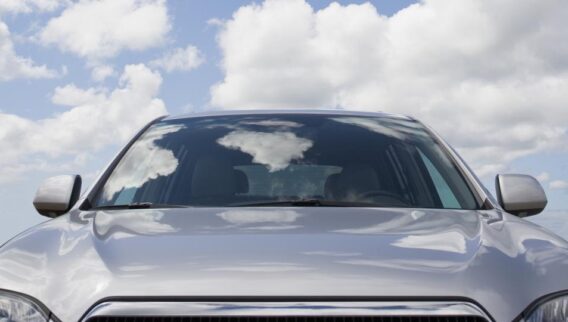The national average cost of car insurance is $2,026 per year or $169 per month, according to Forbes Advisor’s 2025 analysis of full coverage rates. The national average for state minimum coverage is $638 per year or $53 per month.
Car insurance is required to drive legally in nearly all states, so knowing what you can expect to pay for coverage is helpful. We analyzed rates from the best car insurance companies to find the average cost of auto insurance by:
All of these factors are taken into account by car insurance companies when pricing policies.
Key Takeaways
- USAA, Nationwide, Travelers and Geico are the cheapest car insurance companies for full coverage. USAA is only available to drivers with a military affiliation.
- USAA, Erie, Auto-Owners, Geico and Westfield are the cheapest for state minimum car insurance.
- The average cost for full coverage car insurance is $2,026 per year.
- State minimum insurance is 69% cheaper than full coverage ($638 per year) but doesn’t include comprehensive and collision, which pays for damage to your vehicle.
Why You Can Trust Forbes Advisor Guides
We analyzed car insurance costs for a wide variety of ages and driver profiles. Our editors are committed to bringing you unbiased ratings and information. Our editorial content is not influenced by advertisers. You can read more about our editorial guidelines and the methodology.
- 374,862 car insurance rates analyzed
- 102 years of insurance experience on the editorial team
How Much Is Car Insurance?
The national average cost for car insurance is $2,026 per year, according to our analysis. This rate is for full coverage car insurance, which includes optional coverage for theft and damage to your vehicle from a collision and other non-crash events, such as a fire or flooding.
Drivers with the minimum amount of liability car insurance required by their state pay an average of $638 per year. Liability insurance pays only for damage or injuries you cause others if you cause an accident.
Average Car Insurance Rates by State
Car insurance rates by state vary because where you live factors into costs. For instance, car insurance companies look at the number of claims in your area and how much the claims cost, including claims from accidents, theft and weather damage.
The minimum car insurance requirements also vary by state. Be aware that if you move, higher limits or more coverage types may be mandated in your new state.
| State | Average annual full coverage cost | Average annual minimum coverage cost | State minimum liability requirements |
|---|---|---|---|
| $1,975 | $578 | 25/50/25 | |
| $1,913 | $518 | 50/100/25 | |
| $2,110 | $708 | 25/50/15 | |
| $2,295 | $550 | 25/50/25 | |
| $2,768 | $731 | 15/30/5 | |
| $2,591 | $594 | 25/50/15 | |
| $2,252 | $1,088 | 25/50/25 | |
| $2,405 | $1,107 | 25/50/10 | |
| $3,865 | $1,529 | 10/20/10 | |
| $2,003 | $815 | 25/50/25 | |
| $1,369 | $423 | 20/40/10 | |
| $1,246 | $400 | 25/50/15 | |
| $1,903 | $629 | 25/50/20 | |
| $1,627 | $476 | 25/50/25 | |
| $1,559 | $318 | 20/40/15 | |
| $2,032 | $600 | 25/50/25 | |
| $2,496 | $799 | 25/50/25 | |
| $3,545 | $1,060 | 15/30/25 | |
| $1,361 | $477 | 50/100/25 | |
| $2,210 | $1,004 | 30/60/15 | |
| $1,804 | $567 | 20/40/5 | |
| $2,372 | $1,173 | 50/100/10 | |
| $2,016 | $677 | 30/60/10 | |
| $1,917 | $537 | 25/50/25 | |
| $2,434 | $726 | 25/50/25 | |
| $2,354 | $544 | 25/50/20 | |
| $1,709 | $412 | 25/50/25 | |
| $2,496 | $920 | 25/50/20 | |
| $1,390 | $518 | 25/50/25 | |
| $2,438 | $1,237 | 25/50/25 | |
| $2,082 | $551 | 25/50/10 | |
| $2,612 | $1,114 | 25/50/10 | |
| $1,470 | $528 | 30/60/25 | |
| $2,190 | $626 | 25/50/25 | |
| $1,434 | $389 | 25/50/25 | |
| $2,741 | $567 | 25/50/25 | |
| $1,748 | $824 | 25/50/20 | |
| $2,353 | $530 | 15/30/5 | |
| $2,080 | $755 | 25/50/25 | |
| $2,172 | $776 | 25/50/25 | |
| $2,075 | $381 | 25/50/25 | |
| $1,843 | $547 | 25/50/25 | |
| $2,609 | $796 | 30/60/25 | |
| $2,050 | $771 | 25/65/15 | |
| $1,158 | $313 | 25/50/10 | |
| $1,755 | $621 | 30/60/20 | |
| $1,525 | $547 | 25/50/10 | |
| $1,942 | $542 | 25/50/25 | |
| $1,655 | $424 | 25/50/10 | |
| $1,531 | $319 | 25/50/20 |
Least and Most Expensive States for Full Coverage Car Insurance
Our analysis of average car insurance rates by state finds that Vermont is the cheapest state for full coverage car insurance. The cheapest states are:
- Vermont: $1,158 a year
- Idaho: $1,246 a year
- Maine: $1,361 a year
- Hawaii: $1,369 a year
- New Hampshire: $1,390 a year
The most expensive state for full coverage auto insurance is Florida. The top most expensive states are:
- Florida: $3,865 a year
- Louisiana: $3,545 a year
- California: $2,768 a year
- Oklahoma: $2,741 a year
- New York: $2,612 a year
Least and Most Expensive States for Minimum Liability Car Insurance
Drivers in Vermont pay the least for minimum liability coverage car insurance compared to the rest of the country. The cheapest states are:
- Vermont: $313 a year
- Iowa: $318 a year
- Wyoming: $319 a year
- South Dakota: $381 a year
- Ohio: $389 a year
Florida drivers pay the most when they buy their state’s minimum liability car insurance. The most expensive states are:
- Florida: $1,529 a year
- New Jersey: $1,237 a year
- Michigan: $1,173 a year
- New York: $1,114 a year
- Delaware: $1,107 a year
How Much Does Car Insurance Cost by Age?
The average cost of car insurance is $6,045 a year for an 18-year-old driver. It’s $2,204 a year for a 30-year-old and $1,847 a year for a 60-year-old for full coverage, based on our research.
Car insurance costs start high in your teen years but begin to decrease as you get older and gain more driving experience. The average rate for 16-year-old drivers with their own policy is $8,420 a year. Average rates for 17-year-olds clock in at $6,736 a year. That’s about 20% lower than what 16-year-olds pay.
Young and inexperienced teen drivers see higher rates because they’re more likely to be in accidents and file claims. That makes it critical to shop for the best cheap car insurance for teen drivers.
Senior drivers have experience on their side but reaction times may decrease. Car insurance companies consider those in their 70s and older to have a higher likelihood of getting into accidents. As long as your driving record is clear of accidents or tickets, your rates should get cheaper as you age until you approach your 70s and rates start to rise again.
| Age | Average annual cost per year | % difference from 40-year-old cost |
|---|---|---|
| $8,420 | 308% higher | |
| $6,736 | 227% higher | |
| $6,045 | 193% higher | |
| $4,593 | 123% higher | |
| $4,174 | 102% higher | |
| 25-year-old | $2,456 | 19% higher |
| 30-year-old | $2,204 | 7% higher |
| 40-year-old | $2,062 | N/A |
| 50-year-old | $1,932 | 6% cheaper |
| 60-year-old | $1,847 | 10% cheaper |
| 70-year-old | $2,048 | 1% cheaper |
| 80-year-old | $2,538 | 23% higher |
Average Car Insurance Rates for a Parents’ Policy With Teen Added
The cheapest way to insure teen drivers is usually by adding them to your policy. Still, it can double the parents’ auto insurance costs. Our analysis found that listing a 16-year-old driver on a parent policy increased the rate by an average of 91%. The annual cost for the parents’ policy jumped from $2,592 to $4,951 a year. That’s a $2,359 per year increase.
| Age of teen driver | Parents’ average annual car insurance cost after adding teen driver |
|---|---|
| $4,951 | |
| $4,530 | |
| $4,198 | |
| $3,769 |
Average Cost of Car Insurance by Gender
Car insurance companies find that young males are more likely to engage in unsafe driving behavior, so they pay more than females initially. This rate gap for males tends to close around age 25 and become nearly on par with their female counterparts—but creep up again for males in their 70s or 80s.
Gender can be used in pricing car insurance in all states except California, Hawaii, Massachusetts, Michigan, North Carolina and Pennsylvania.
Average Car Insurance Rates by Age and Gender
Our analysis of car insurance rates for males and females ages 18 to 80 found that males tend to pay more when young and old. Car insurance companies’ data finds these male age groups exhibit riskier driving patterns than females. More risk equals higher rates.
| Age | Gender | Average annual cost | % difference males pay compared to females | $ difference males pay per year compared to females |
|---|---|---|---|---|
| 18 | Female | $5,646 | N/A | N/A |
| 25 | Female | $2,407 | N/A | N/A |
| 40 | Female | $2,071 | N/A | N/A |
| 60 | Female | $1,832 | N/A | N/A |
| 80 | Female | $2,437 | N/A | N/A |
Related: How Gender And Age Affect Car Insurance Rates
How Much Is Auto Insurance by Company?
We found that the average cost of auto insurance ranges from around $1,300 to $3,000 per year for full coverage. Each auto insurance company assesses risk differently, which means prices can vary significantly among companies.
USAA—one of the best military car insurance companies—is the cheapest for both full coverage and state minimum. The next cheapest full coverage car insurance comes from Nationwide, followed by Travelers. Erie and Auto-Owners have the next lowest rates for state minimum insurance.
| Company | Average annual cost for full coverage car insurance | Average annual cost for state minimum car insurance |
|---|---|---|
| USAA* | $1,364 | $373 |
| $1,436 | $640 | |
| $1,521 | $667 | |
| $1,597 | $481 | |
| $1,642 | $437 | |
| $1,826 | $656 | |
| $1,855 | $445 | |
| $1,984 | $481 | |
| $2,025 | $617 | |
| $2,210 | $847 | |
| Direct Auto (formerly Safe Auto) | $2,889 | $817 |
| $2,896 | $895 | |
| $3,093 | $938 |
Average Cost of Car Insurance by Driving History
Car insurance companies reward those with clean driving records with cheaper rates because good drivers typically file few claims, so they’re generally cheaper to insure.
Auto Insurance Rates For Clean Driving Record
If you can maintain a clean driving record, car insurance companies will consider you a good driver and offer you their best rate.
| Driver type | Average annual full coverage cost |
|---|---|
| Teen driver with clean driving record (age 17) | $6,273 |
| Young driver with clean driving record (age 21) | $3,215 |
| Adult driver with clean driving record (age 40) | $2,069 |
| Senior driver with clean driving record (age 70) | $2,009 |
Average Car Insurance Rates After a Speeding Ticket
Expect to pay more for car insurance after a speeding ticket. For example, a 40-year-old will see an average annual hike of around $500 per year after a speeding ticket.
| Driver type | Average annual full coverage cost |
|---|---|
| Teen driver with speeding ticket (age 17) | $7,396 |
| Young driver with speeding ticket (age 21) | $3,918 |
| Adult driver with speeding ticket (age 40) | $2,595 |
| Senior driver with speeding ticket (age 70) | $2,588 |
Average Car Insurance Rates After a DUI
Car insurance rates after a DUI increase by an average of around $1,300 a year—from $2,069 to $3,413 a year for a 40-year-old, based on our analysis.
| Driver type | Average annual full coverage cost |
|---|---|
| Teen driver with DUI (age 17) | $8,730 |
| Young driver with DUI (age 21) | $4,978 |
| Adult driver with DUI (age 40) | $3,413 |
| Senior driver with DUI (age 70) | $3,431 |
Average Car Insurance Cost After an At-Fault Accident
Car insurance rates after an accident increase an average of 49% for a 40-year-old driver who caused injury to others. That spikes their average rate by over $1,000 a year, from $2,069 to $3,072.
Many car insurance companies offer an accident forgiveness benefit as part of being a loyal customer or for a fee. It spares you from a rate increase after your first auto accident. But if you have two accidents, don’t expect a pass on the second one.
| Driver type | Average annual full coverage cost |
|---|---|
| Teen driver after an accident with injury (age 17) | $7,979 |
| Young driver after an accident with injury (age 21) | $4,435 |
| Adult driver after an accident with injury (age 40) | $3,072 |
| Senior driver after an accident with injury (age 70) | $3,114 |
Average Cost of Car Insurance Based on Credit Score
Insurers say drivers with lower credit are more likely to file claims, which is why car insurance rates for drivers with bad credit are often very high. Our analysis found that drivers with poor credit pay an average of 88% more than drivers with good credit.
Not all states allow insurers to use credit to price car insurance. Using a credit-based auto insurance score is banned from auto insurance rate calculations in California, Hawaii, Massachusetts and Michigan.
| Credit Score | Average annual cost | % difference from good credit average annual cost |
|---|---|---|
| Excellent | $1,676 | 19% cheaper |
| Good | $2,068 | |
| Fair | $2,558 | 24% higher |
| Below fair | $3,117 | 51% higher |
| Poor | $3,889 | 88% higher |
Average Cost of Car Insurance by Car Type
The type of car you drive affects auto insurance rates, particularly collision and comprehensive coverage costs. It’s cheaper to insure vehicles with better safety records and cheaper repair bills and that are less costly to replace if totaled in an accident.
Minivans are the generally cheapest type of vehicle to insure.
| Car type | Average annual cost |
|---|---|
| Minivan | $2,041 |
| Van | $2,168 |
| Trucks | $2,234 |
| Hatchback | $2,298 |
| SUV | $2,378 |
| Sedan | $3,184 |
| Convertible | $3,393 |
| Wagon | $3,438 |
| Coupe | $3,894 |
Average Car Insurance Rates by Fuel Type
Hybrid and electric car insurance is more expensive than insurance for gas-powered cars because they can be more expensive to repair. Mechanics may need specialized training and parts can be more costly.
| Car fuel type | Average annual cost |
|---|---|
| Gas | $2,567 |
| Hybrid | $2,802 |
| Electric | $3,547 |
Average Car Insurance Costs for Top-selling Vehicles
The Honda CR-V and Subaru Outback have an average annual rate of $1,723. That’s $1,405 a year cheaper than the insurance cost of the most expensive vehicle on our list.
Tesla Model Y insurance is the most expensive at $3,128 a year, followed by Tesla Model 3 insurance at $3,053 a year. The Tesla Model Y car insurance costs are 82% more than the Honda CR-V or Subaru Outback. The value of the vehicles and repair costs are a couple of reasons the Tesla models are so expensive to insure.
| Rank | Vehicle | Annual average cost |
|---|---|---|
| 1 | Ford F-150 XL | $1,769 |
| 2 | Chevrolet Silverado 1500 Limited WT | $1,812 |
| 3 | Ram 1500 Classic Express | $1,963 |
| 4 | Toyota RAV4 LE | $1,835 |
| 5 | Tesla Model Y Long Range | $3,128 |
| 6 | Toyota Camry SE | $2,095 |
| 7 | Honda CR-V EX | $1,723 |
| 8 | Chevrolet Equinox LS | $1,856 |
| 9 | Toyota Tacoma SR | $1,990 |
| 10 | GMC Sierra 1500 Pro | $1,827 |
| 11 | Ford Explorer | $1,979 |
| 12 | Tesla Model 3 | $3,053 |
| 13 | Jeep Wrangler Sport | $1,807 |
| 14 | Toyota Corolla L | $2,099 |
| 15 | Toyota Highlander LE | $1,990 |
| 16 | Jeep Grand Cherokee Laredo | $1,960 |
| 17 | Hyundai Tucson N Line | $1,868 |
| 18 | Kia Sportage EX | $1,831 |
| 19 | Subaru Outback | $1,723 |
| 20 | Nissan Altima 2.5 SV | $2,316 |
Average Auto Insurance Cost by Usage
How much you drive and how you use your vehicle will affect your car insurance rates. For example, if you drive a convertible mainly on weekends and it’s designated for pleasure use, your auto insurance rates will differ from the car you designated as your daily commuter.
If you use your car for business purposes, such as making deliveries, you normally need commercial auto insurance instead of a personal auto policy.
Average Car Insurance Cost by Annual Mileage
If you drive your car fewer miles annually because you are retired, work from home or merely don’t drive much, you should see reduced auto insurance rates. You’re on the road less, so you pose less risk of being in an accident and filing claims.
Drivers in the U.S. travel an average of nearly 13,500 miles annually, according to data from the Federal Highway Administration. The FHA data reveals that male motorists drive more miles annually (16,550 miles) than females (10,142 miles). Here’s a look at the average car insurance costs per year based on miles driven.
| Average annual mileage | Average annual insurance cost |
|---|---|
| 3,000 miles | $1,996 |
| 6,000 miles | $2,015 |
| 8,000 miles | $2,046 |
| 11,000 miles | $2,065 |
| 13,000 miles | $2,087 |
| 16,000 miles | $2,103 |
| 25,000 miles | $2,138 |
Factors That Affect Car Insurance Prices
Most auto insurers use these main factors that affect car insurance rates, though how each item is weighed varies among insurers.
Learn more: Why Is My Car Insurance So Expensive?
How to Save Money on Car Insurance
Types of Car Insurance Discounts
Discounts help lower the average cost of car insurance. Look for these common discounts and ask your agent if there are any other discounts you’re eligible for to get cheap car insurance.
- Advance shopping discount: Getting quotes before your current policy expires can earn you a discount. It’s best to shop seven to 14 days in advance to receive this savings.
- Defensive driving class. If you’re 55 or older, you may earn a discount for sharpening your skills with an approved driving course. Make sure your insurer approves of a specific course for a discount before taking it.
- Good driver discount: A driving record free of tickets and accidents can qualify you for a good driver discount. Some insurers refer to it as a safe driver discount.
- Membership discount: Ask about a discount based on associations or organizations you’re a member of, such as college alumni associations or a union.
- Multi-policy discount: You can reduce your rates by bundling home and auto policies, meaning you bought them from the same company. Discounts vary between 6% and 23%, according to our research.
- Multi-vehicle discount: Having more than one vehicle on the same car insurance policy gets you a multi-car insurance discount.
- Online quote: Save with some insurers by getting an online quote and then buying a policy.
- Paid in full discount: Pay your car insurance bill upfront instead of paying monthly to save money.
- Paperless discount: Choosing to go paperless with your bills and policy documents may get you a small discount. The discount is usually under 5% but is easy to obtain.
- Vehicle safety features: Some auto insurers give discounts if your car has specific safety equipment, such as airbags, anti-lock brakes or daytime running lights.
If you have a teen or young adult on your policy, ask about:
- Receiving a discount if your child completes an approved driver training program.
- A good student discount if your young driver does well in school (high school or college).
- A reduction in rates for a “student away at school” if your child is off to college at least 100 miles away from home and is without a car.
Related: Best Car Insurance for College Students
Best Car Insurance Companies 2025
With so many choices for car insurance companies, it can be hard to know where to start to find the right car insurance. We've evaluated insurers to find the best car insurance companies, so you don't have to.
Methodology
We used data from Quadrant Information Services to find average rates for good drivers, drivers who have caused an accident, drivers with a speeding ticket, drivers with a DUI, drivers with poor credit, low-mileage drivers, for adding a teen driver, senior drivers and young drivers.
Unless otherwise noted, rates for full coverage are based on insuring a new Toyota RAV4 and coverage of:
- $100,000 for injuries to one person, $300,000 for injuries per accident and $100,000 of property damage (known as 100/300/100).
- Uninsured motorist coverage of 100/300.
- Collision and comprehensive insurance with a $500 deductible.
- Any other insurance required in a state.
State minimum coverage rates reflect the minimum amount of auto insurance required in each state.
Average Cost of Car Insurance Frequently Asked Questions (FAQs)
What is the average cost of car insurance?
The average cost of car insurance is $2,026 a year, according to Forbes Advisor’s analysis of full coverage auto insurance policies. The average cost of a basic liability car insurance policy is $638 a year.
Full coverage car insurance includes collision and comprehensive coverage, which pay for damage to your own vehicle due to a wide range of problems, from car crashes to floods to fallen tree branches.
What is the average cost of car insurance per month?
The average cost of car insurance is $169 a month for a full coverage policy, according to Forbes Advisor’s analysis. The average cost of state-minimum liability car insurance is $53 a month.
Your own rates will depend on factors such as the vehicle you drive, your driving record and where you live.
What is the difference between minimum and full coverage?
Minimum coverage car insurance is a policy that provides the state-mandated amount of liability car insurance you need to drive legally. It’s bare-bones coverage that doesn’t pay for damage to your vehicle, so it’s usually the cheapest type of car insurance.
Full coverage car insurance includes liability insurance as well as comprehensive and collision insurance, which pay to repair or replace your car if it’s damaged in an accident, stolen or damaged by other specified events, such as flooding, fire or striking an animal. Knowing the difference between full coverage and minimum liability coverage will help you determine which is right for you.
Who pays the highest car insurance premiums?
Car insurance for high-risk drivers is usually the most expensive. High-risk drivers can include teens and those with DUIs, accidents and other claims.



















